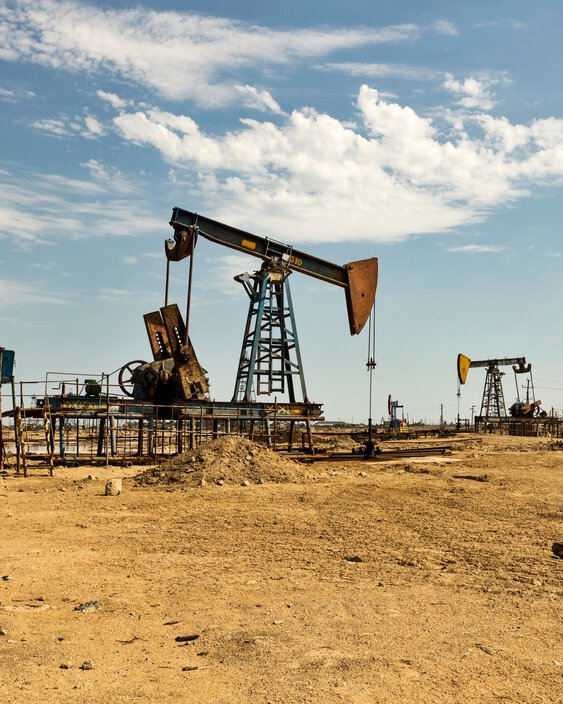
Fracking
In contrast to conventional drilling, special production techniques are used in the extraction of oil and gas by fracking.
Loading ...
Shale formations may contain extensive reserves of natural gas and oil, which has led to an increased interest in their exploitation in recent years. In particular, due to the looming exhaustion of conventional proven reserves, geopolitical instability, and the corresponding increase in energy prices, numerous companies have sought new locations to extract shale gas and oil.
Fracking is a well-stimulation technique in which rock is fractured by a hydraulically pressurized liquid. The two techniques combined to exploit shale gas are hydraulic fracturing (fracking) and horizontal drilling. Another important aspect of this drilling technique is the use of specific fracturing fluids (fracfluids). They consist of water (90%), proppants (8-9%) like sand or bauxite and chemical additives (1-2%). These fluids are injected under high pressure into a wellbore to create cracks in the deep-rock formations through which natural gas, petroleum, and brine will flow more freely.
Areas of concern
There are areas of concern that also influence the political decision-making processes in several countries. The main aspects of possible environmental exposure are:
- Cutback in ground water and water reserves, in particular in arid environments
- Contamination of ground water, drinking water and surface water by fracfluids
- Contamination of soil by fracfluids
- Tectonic shifts including earthquakes
- Evaporation and release of fugitive gases
- Increased radioactivity around wastewater discharge sites
Liability risks
Taking into consideration these objections, a number of risks may arise where fracking operations are conducted, mainly:
- Environmental regulatory and litigation risks
- Civil law litigation based upon damage to property and contamination
- Alleged violations of disclosure obligations / other securities law obligations
Environmental risks may also have an impact on human health. According to the US Government Accountability Office (GAO), fracking poses inherent public health risks, although the extent of these risks is unknown so far. In particular, long-term effects of silica and non-methane hydrocarbons have to be explored in future studies. Potentially, each company working on or involved in oil or gas wells is exposed to losses that might occur in relation to massive hydraulic fracturing operations. The following services, products or technologies are specifically exposed in relation to hydraulic fracturing operations, i.e.
- Casing and/or cementing
- The fracking operation itself
- Produced water management
- Supply of chemicals used in fracking fluids
Liability fields
The possible liability fields can only be described to a limited extent. The following lines of insurance appear to be most at risk:
- Commercial general liability: Adverse health effects due to contaminated air, land or water including medical monitoring costs. Property damage (including crops or livestock) due to contamination of air, land, or water or due to seismic activity. Property damage claims in respect of loss of use or diminution of value.
- Property insurance: First-party damage due to seismic activity or subsidence. (Contingent) business interruption
- Energy packages: Operators extra expense (OEE), e.g. control of well, redrilling and/or seepage and pollution. However, hydraulic fracturing does not really pose a greater risk than ‘conventional’ oil and gas exploration and production in this respect.
- Auto liability: e.g. transport of produced water
- Environmental impairment liability: e.g. gradual pollution or first-party clean-up costs either from pre-existing or new conditions
- Workers’ compensation and employers' liability: Generally similar exposure as the ‘conventional’ upstream industry
- Directors and officers insurance: Directors and officers may face actions alleging that they (or the corporation) have failed to disclose, misrepresented, or mismanaged the risks associated with hydraulic fracturing operations, resulting in harm to the corporation (such as, e.g., lost revenues, loss of market share, falling stock price, or reputational damage)